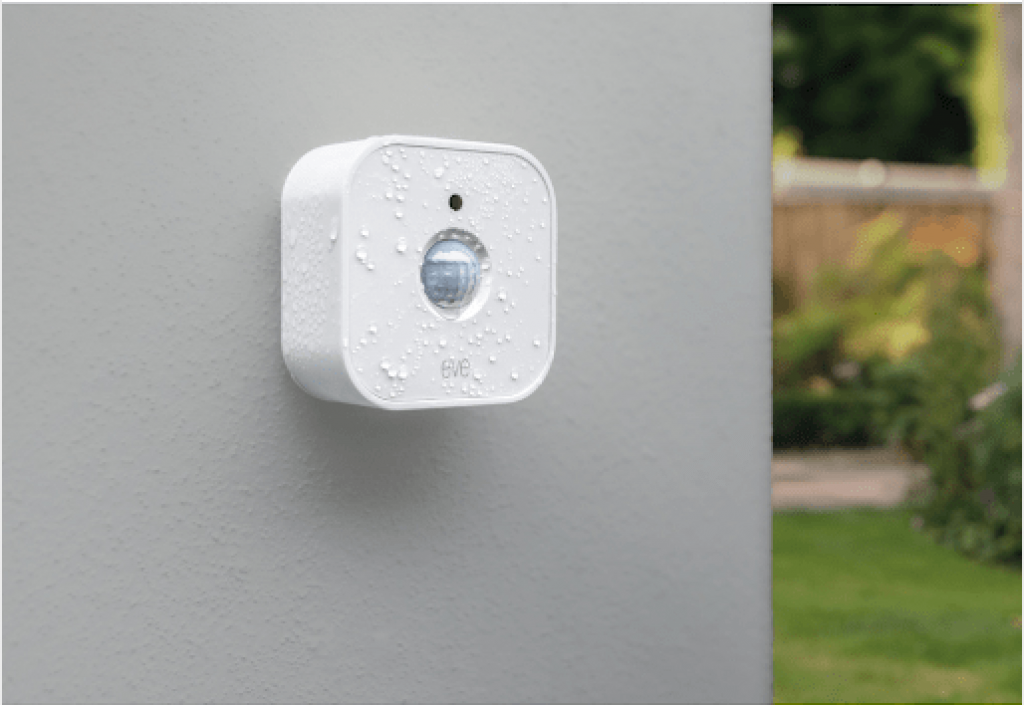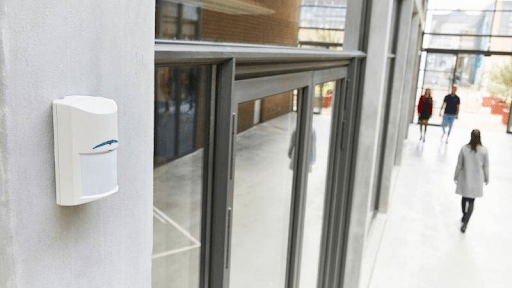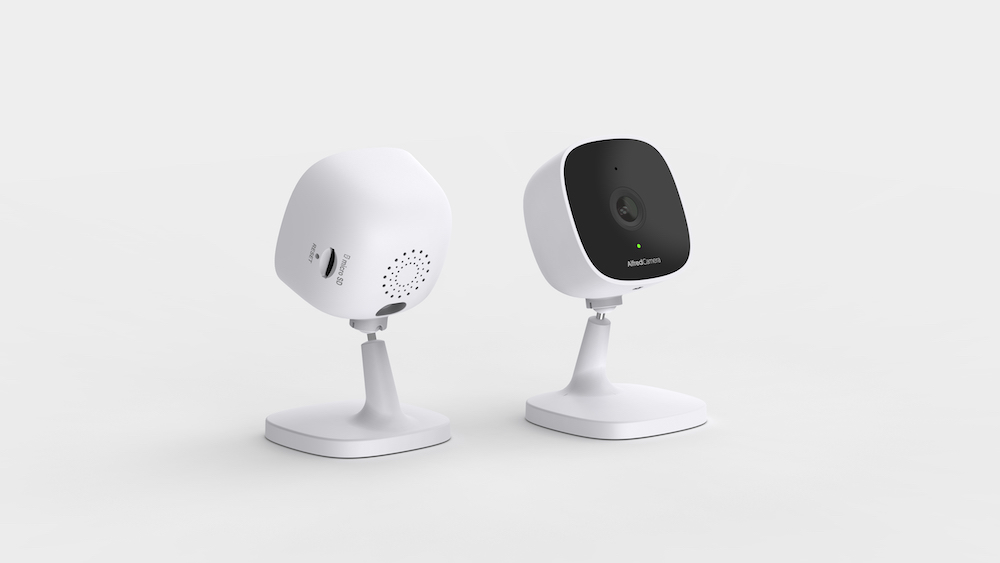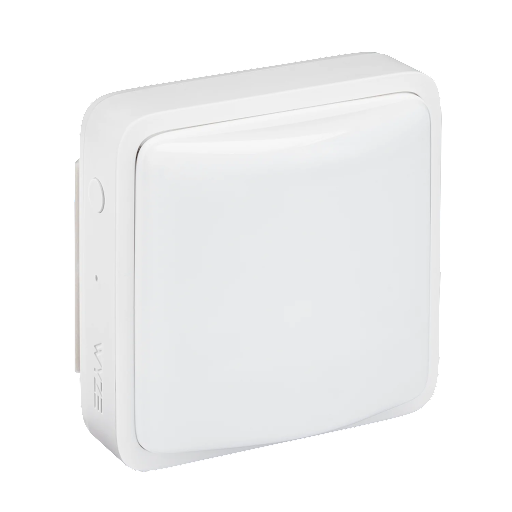With even the most affordable of security cameras now boasting visual motion detection, motion sensors aren’t the first thing that jumps to mind when homeowners and renters look to improve their home security. But they can still be a really useful, affordable way to monitor spaces that are particularly large.
What are the types of motion sensors, and do you really need one? Read on to learn all you need to know about the use of motion sensors for security.
How Do Sensors Work?
A motion sensor is used to detect the presence of a trespasser in a monitored area, such as in home, office, or workplace security. While most of us will be pretty familiar with motion detection used in IP security cameras, motion sensors have been used in fully integrated security systems for years.
Motion sensing technology is used in many devices, including lights, cameras, and in alarm systems. Unless you have a full security system installed in your home, you might not be all that familiar with the latter, as IP cameras have at least partially phased out the need for a non-visual motion sensor in the average home.
Still, you’ll have knowingly or unknowingly come across them on a day to day basis in supermarkets and other public spaces. They can also be handy for homes that are larger than average, and can be used to turn on lights automatically, open doors, and even trigger doorbells without the visitor having to press a button.
3 Types of Motion Sensors
True motion sensors work via two ways that can be described as either ‘passive’ or ‘active’.
Passive Infrared
Heat signatures produced by the objects/subjects in the area surrounding the sensor can be read by a passive infrared (or PIR) sensor. The differences in temperature as the objects/subjects move will trigger an alarm if they pass a certain threshold (i.e. human body temperature).
Many PIR sensors can distinguish between humans and animals, avoiding false alarms caused by pets. Passive infrared is also often used in night vision cameras to create an image out of near darkness; infrared is invisible to the human eye.
 Eve Motion wireless motion sensor. |
| This battery-powered, IPX3 water resistant motion sensor (available exclusively through Apple) works perfectly alongside Apple TV or HomePod, and can be used to control lights, appliances, and scenes. Available from the Apple Store. $39.95. |
Active Microwave/Sound Wave
A bit like a sonar, microwave-based sensors send out microwaves into the monitored area. These bounce back, reflecting off of everything in the space. If something is moving, an alarm will be triggered as the shifting measurements of reflected microwaves indicate movement.
This is less common and more expensive than passive methods, though it is able to cover a much larger area than a PIR sensor. It might be more beneficial as a motion sensor outdoors.
High pitched sound waves are used instead of microwaves in some systems, but it works the same way. These are most common in animal detection/prevention products (where the high pitched sound is unpleasant to them, keeping them away) and garage door sensors. Children are generally able to hear the sound emitted.
 SimpliSafe Motion Sensor |
| SimpliSafe’s motion sensor detects motion within 30ft through heat signatures. It’s able to distinguish human from non-human. You have the option to pay for a monitoring center that will dispatch police. Available from SimpliSafe. Prices vary based on system. |
Dual
Some sensors use both passive (infrared) and active (microwave) technologies. The idea behind this is that greater accuracy is obtained by using two different methods operating in different frequency ranges. Both have to trigger for an alarm to sound, thereby reducing the occurrence of false alarms.
 Bosch TriTech Motion Detector |
| Bosch’s TriTech motion detectors are robust enough for commercial use. They combine both microwave and PIR sensors for superior accuracy, effectively avoiding false alarms. Available on Amazon. $51.95. |
What are Motion Sensors Used for?
Motion sensing technologies are incorporated into different products used in security and non-security contexts. Below are some of the most common ways motion sensors are used.
Motion Sensor Lights
An investment based around aesthetics, security, and efficiency, motion sensor lights are an alternative to conventional switch lights that turn on and off by themselves.
When someone walks into a room with motion lights, the lights turn themselves on. After a certain period of detecting no motion, they will turn themselves off. The ‘motion sensor’ isn’t a special bulb, but a light switch.
The idea that they are energy efficient is a little overstated, as they are left ‘on’ constantly, therefore still using up energy. But in offices and other public spaces, they do end up saving energy because they avoid keeping lights lit by accident. If paired with a photo sensor or timer they do end up using less energy than standard lights.
They are definitely cost efficient, saving money in the long term where lights are ordinarily left on, and in rooms with medium-to-low traffic.
 Sengled Smart LED with Motion Sensor. |
| Sengled is among the best places to go for all things smart lighting. Their standard LED smart light with motion sensor fits right into smart homes alongside Sengled Smart Hub, SmartThings hub, and Amazon Echo screen devices, so that they can be automated based on the motion they detect. Available at BestBuy. $29.99. |
Motion Sensor Cameras
IP security cameras often have motion sensing technologies to make them more effective at what they’re designed to do—keep you safe—AlfredCam is no exception.
Motion sensing in cameras is based on AI perception of movement across the pixels. Whatever the camera deems significant movement can then trigger a recording to start, which will either last for a set period or will continue until movement has ceased for long enough.
At the same time, a notification or alarm may be triggered if the user opts to do this.
Less common is human detection, which uses more advanced algorithms or heat detection to identify people in the frame. This is handy because it effectively wipes out false alarms caused by pets, wild animals, or objects exhibiting significant movement (like trees blowing) in the background.
You’ll find that many cameras have this feature behind a paywall.
 AlfredCam hardware camera. |
| AlfredCam is a simple and sophisticated hardware security camera built with easy use in mind. Motion detection accurately detects movement across three sensitivity levels, recording footage and sending a notification to your paired device. Available from within in the AlfredCamera App at $34.99. |
AlfredCamera is available to download now for iOS and Android devices.
Motion Sensor Alarms
In fully-fledged security systems, you’ll usually find one or two motion sensor alarms (or as many as you choose to have if the package you pick allows for it). Much like a motion sensor camera, these will detect motion and trigger a response accordingly.
You can arm a motion sensor alarm at a particular time, like when you leave the house, and disarm it as and when necessary. In that period, motion above a certain threshold, which is either a default measure or set by the user, will trigger an alarm.
Nowadays, these will probably send notifications to your phone rather than just sounding an alarm inside the immediate area. Many will also now incorporate voice controls, whether natively or through third party support, like Amazon Alexa.
Because they are usually found included in security system kits, they may also be able to notify law enforcement authorities if the user pays for this service.
 Wyze Sense Motion Sensor. |
| Simple and effective, Wyze’s flagship motion sensor does what it says on the tin: detects motion. In terms of price, it can’t be beat, but be aware that you will need a Wyze Sense Hub (available with an annual plan) for it to work. Available from Wyze. $8.99. |
Contact Sensors?
Commonly mistaken for motion sensors, contact sensors are the kind that are placed on a door or window. Though their function is similar to a motion sensor alarm, trespassing is signaled by contact made or broken between two surfaces. They do not detect motion.
These are pretty handy devices, particularly because as many as 34% of burglaries are started by simply walking through the door, with a further 23% facilitated through a first-floor window.
Where Do You Put Motion Sensors?
Placement will determine how useful motion sensors are, so finding the right spot is pretty important. Maybe it’s more informative to focus on where not to put your sensors, as there’s certainly more places to avoid than there are places to encourage.
Anywhere low to the ground is to be avoided if pets, babies, or some kind of moving object frequents the space. This will also greatly minimize how much the sensor can ‘see’.
Windows are a hard pass, as temperatures will fluctuate as the weather shifts, potentially confusing the sensor (a blowing curtain will also do the trick). Likewise, sensors must be kept away from heaters, AC units, or radiators. Doors should also be avoided, as this will also limit the range of the sensor and is likely to be subject to temperature fluctuations.
If you’re curious about having detection on doors and windows, we’d recommend leaving it to contact sensors, which you’ll find much more adequate.
As a rule of thumb, aim as high off the ground as possible. Corners will expand vantage points and are likely to maintain a consistent temperature.
For more on where to put your motion sensors, check out ADT’s brilliant guide.
Which is the Best Motion Sensor?
The best motion sensor is passive infrared (PIR). At least, it’s by far the most widely used and most affordable form of motion sensing. There are concerns about the impact microwaves have on humans, while sound waves will be unpleasant for young children and pets. Active sensors are more expensive technologies.
FAQ
Is motion sensor a camera?
No, a motion sensor is not a camera, but it is sometimes used in cameras. A motion sensor is any kind of technology that detects motion. This is done by either reading heat signatures (via infrared) or by bouncing microwaves off of a space and measuring the distances of the reflections.
Do motion sensors work in the dark?
Yes, motion sensors work in the dark because most will use passive infrared technology to detect heat signatures. Infrared is invisible to the human eye.
What is the difference between IR and PIR sensors?
IR (infrared) sensors emit infrared, and can detect when something interrupts that beam. PIR (passive infrared) sensors do not emit infrared, but can detect it to measure heat signatures, which can reveal motion.
Are motion sensors effective?
Yes, motion sensors are effective at detecting motion. However, optimal placement is very important if you want to get the most out of them. Motion sensors should be placed high up and in corners, where a strong vantage point is obtainable. Avoid placing them near windows, doors, and objects that are subject to temperature changes (heaters, AC units, etc.).
What are the two types of motion detectors?
Active and passive detectors are the two types of motion detection. Active (usually microwave, sound, or infrared) emit a wave of some kind. It receives motion information based on what bounces back. Passive (infrared) does not, but instead detects the wave in the environment. Motion information is received by shifting measurements (in the case of PIR, changing heat signatures).
Conclusion
Though they probably aren’t the first thing that jumps to mind for even the most security-savvy person, motion sensors are an invaluable tool for improving security at home, in workplaces, and in other public spaces. Motion sensing technology has made our cameras, lights, and even entryways more secure and more effective.
Whether used in home lighting or in motion alarm systems, motion sensors can make security measures more convenient for us.
